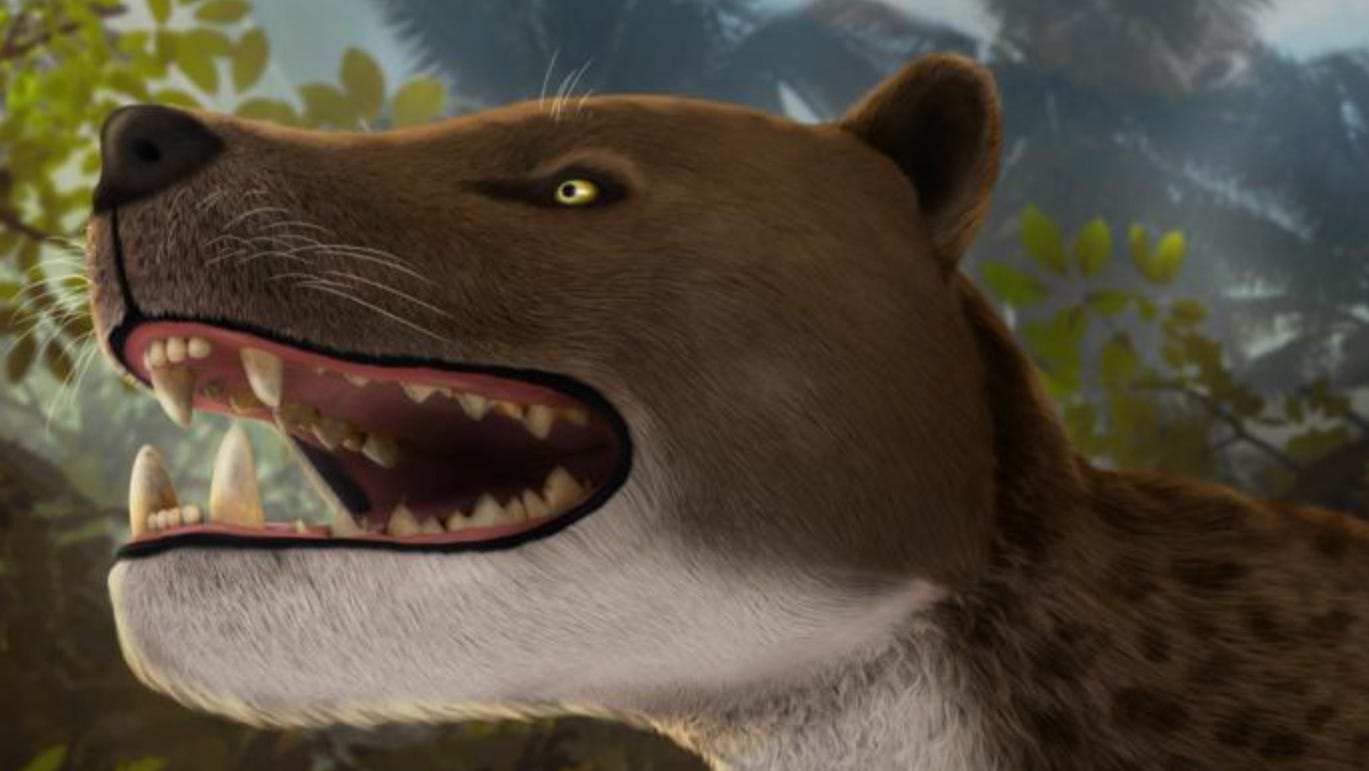
A remarkable discovery has been made by a group of scientists in Egypt, who unearthed a nearly intact skull that sheds light on a previously unknown apex predator species thought to have roamed the Earth 30 million years ago.
In a study published on Monday in the Journal of Vertebrate Paleontology, the findings reveal a formidable big-cat-like creature equipped with a powerful jaw and razor-sharp teeth that dominated the food chain during the Oligocene Epoch. Found in Fayum, Egypt, this formidable predator thrived in a tropical rainforest environment at that time.
The newly identified species, dubbed Bastetodon syrtos, belongs to the Hyaenodonta family. This extinct lineage predated modern carnivores such as cats, dogs, and hyenas, resembling early forms of big cats. Once, they ruled the food chain after the dinosaurs’ extinction, feeding on primates, early hippos, and elephants before eventually going extinct themselves.
The Bastetodon was the size of a leopard, featuring a short, feline-like snout, hyena-like teeth, and a body akin to that of a dog.

A ‘dream’ discovery
According to Shorouq Al-Ashqar, a paleontologist and lead researcher at Mansoura University and the American University in Cairo, the discovery of this remarkably complete skull belonging to the hyaenodonta subfamily almost did not happen.
“Just as we were ready to wrap up our work, one of our team members spotted something extraordinary—large teeth protruding from the ground,” she remarked in a statement. “His enthusiastic shout brought us all together, marking the start of an incredible finding: a nearly complete skull of an ancient apex carnivore, a true dream for any vertebrate paleontologist.”
The research team, known as the Sallam Lab, made this groundbreaking discovery in the Fayum Depression, a desert basin recognized as one of Africa’s richest fossil sites. The species honors the ancient Egyptian goddess Bastet, a symbol of protection, pleasure, and health.

New skull may unravel extinction mysteries
This discovery prompted the Sallam Lab researchers to revisit findings regarding another lion-sized Hyaenodont species uncovered over 120 years ago. They constructed the genus Sekhmetop, named after the lion-headed goddess of war and vengeance, and determined that, similar to Bastetodon, it originated in Africa rather than Europe, as previously thought by scientists in 1904.
This revelation provides fresh insights on what occurred to once-dominant predators like the hyaenodonts.
The Hyaenodonts thrived across Asia, Europe, India, and North America. The new study indicates that Bastetodon and Sekhmetop probably migrated from Africa to these regions in successive waves. The team speculated that “cataclysmic” climatic changes and tectonic shifts facilitated the diversification of these distant ancestors of modern cats, dogs, and hyenas. As environmental conditions and available prey shifted, hyaenodonts experienced a decrease in diversity, ultimately leading to their extinction.
“The discovery of Bastetodon represents a crucial advancement in our understanding of the diversity and evolution of hyaenodonts and their distribution across the globe,” Al-Ashqar’s statement concluded. “We look forward to continuing our research to uncover the complex relationships between these ancient predators and their changing environments through time and across different continents.”









